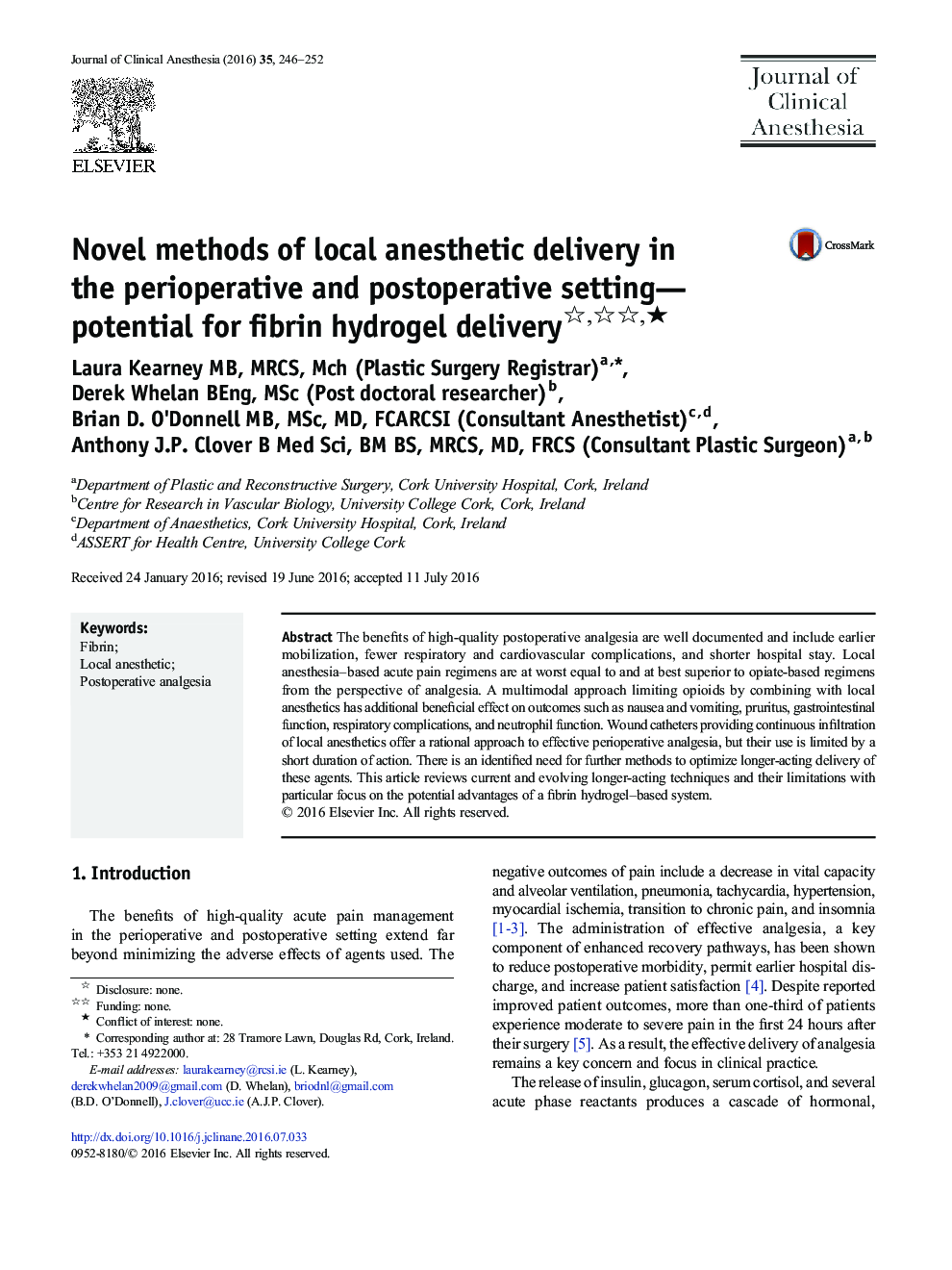| Article ID | Journal | Published Year | Pages | File Type |
|---|---|---|---|---|
| 5884449 | Journal of Clinical Anesthesia | 2016 | 7 Pages |
Abstract
The benefits of high-quality postoperative analgesia are well documented and include earlier mobilization, fewer respiratory and cardiovascular complications, and shorter hospital stay. Local anesthesia-based acute pain regimens are at worst equal to and at best superior to opiate-based regimens from the perspective of analgesia. A multimodal approach limiting opioids by combining with local anesthetics has additional beneficial effect on outcomes such as nausea and vomiting, pruritus, gastrointestinal function, respiratory complications, and neutrophil function. Wound catheters providing continuous infiltration of local anesthetics offer a rational approach to effective perioperative analgesia, but their use is limited by a short duration of action. There is an identified need for further methods to optimize longer-acting delivery of these agents. This article reviews current and evolving longer-acting techniques and their limitations with particular focus on the potential advantages of a fibrin hydrogel-based system.
Related Topics
Health Sciences
Medicine and Dentistry
Anesthesiology and Pain Medicine
Authors
Laura (Plastic Surgery Registrar), Derek (Post doctoral researcher), Brian D. (Consultant Anesthetist), Anthony J.P. (Consultant Plastic Surgeon),
